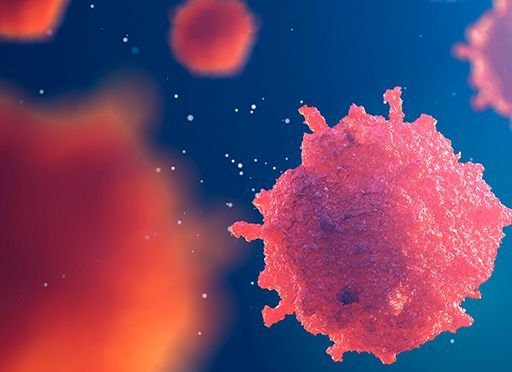Dr. Monty Lyman explains all scientific and medical aspects of your skin, and includes its cultural significance and how it functions as the root of racism.

The Skin You’re In
Your skin is a portal for pleasure and pain. The skin processes crucial vitamin D, kicks out allergens and rushes to heal cuts and bruises. Dr. Monty Lyman of Acute General Medicine at Oxford University Hospitals considers the cellular mechanics of skin’s layers; the conversation between the gut, skin and brain; and the “social skin” of exclusion or acceptance.
The Epidermis and the Dermis
The epidermis is the skin’s surface layer that forms a barrier between your body and the world. Keratinocytes, rich in keratin proteins, form the layers of the epidermis. Hands and feet have an additional layer for added protection. The epidermis keeps moisture locked into the body; without it, you would die of dehydration.
Nerve, lymph and blood vessels pack the dermis, which contains sweat glands, hair follicles and sebaceous oil glands.
Bacteria, Fungi, Mites and Viruses
You carry more organisms in and on yourself than the number of cells in your body. Archaea microorganisms contribute to maintaining acidic skin pH that repels more harmful bacteria. Microscopic Demodex mites eat dead skin and sebum.
At puberty, sebaceous glands multiply, creating oily skin, attracting more fat-eating bacteria and leading to acne. By adulthood, you have a “microbial signature,” and if you live with someone, you share a microbiome.
The Gut and the Skin
The gut and digestion affect the skin. Not drinking enough water reduces skin elasticity. Long-term alcohol abuse dramatically affects skin’s appearance. High-glycemic-index foods and the sugar in many drinks can cause acne and wrinkles. Eating colorful foods, however, such as orange pepper and carrots, which are high in carotenoids, gives skin a healthy glow.
The Healthy, Dangerous Sun
You cannot see the sun’s ultraviolet (UV) light, but its rays penetrate our skin. Melanocytes deep in the epidermis excrete melanin to absorb UV light. White skin provides the equivalent of a sun protection factor (SPF) of 3.
The active form of vitamin D is not actually a vitamin but a hormone. It plays a crucial role in the body’s regulation of calcium, phosphate and other minerals.Monty Lyman
Synthesis of vitamin D depends on the sun’s radiation. Gain sun exposure for 10 to 30 minutes a day, between 11 a.m. and 3 p.m., two or three times weekly. To avoid sunburn and the damaging, thickening effects of overexposure to the sun, utilize broad-spectrum sunscreen with a sufficiently high SPF rating, wear a sunhat and find shade.
Collagen
Support your skin and hair with a diet rich in protein, fruits and vegetables, especially the colorful ones, which boost the immune system and fight oxidative stress. Smoking damages skin by breaking down elastin and collagen, and nicotine contracts the blood vessels in the skin, retarding the supply of oxygen and nutrients.
Sunscreen and retinoic acid have an anti-aging effect. Botox – derived from botulism – paralyzes facial muscles, so you cannot make the expressions that cause lines; thus, you look younger.
Mechanoreceptors
Merkel cells are “touch cells” near the surface of the skin, one of four mechanoreceptors in your fingertips. The brain “maps” the territory of the skin, emphasizing areas featuring the greatest concentration of sensory receptors, such as fingers and lips, with smaller neural representation for areas with fewer receptors, such as the arms. The brains of blind people compensate by rewiring with an increased representation of touch.
When someone touches our skin they also touch our brain because these two organs are in a constant dialogue to try to find out what is touching us and how we should react.Monty Lyman
Your skin changes in anticipation of a loving touch and in expectation of pain. “Free nerve endings,” perceive sexual touch, and release endorphins and oxytocin in response.
Pain receptors, “nociceptors,” alert the brain to potential tissue damage. “Mechanical” nociceptors register pressure or cutting. A-beta fiber nerves alert the brain to potential danger; C-fiber nerves carry the feeling of pain. “Thermal” nociceptors perceive hot and cold extremes.
Marked Skin
The healing following damage to the skin is intricate and lengthy. Blood platelets plug the wounds created by cuts and clotting proteins coagulate to create a fibrin “mesh.” Inflammation and the immune response kill bacteria and remove dirt and dead cells, which fibroblasts replace over days to rebuild proteins and collagen that heal the skin.
Among the Ethiopian Hamar tribe, women caned during a ritual bear scars on their backs as badges of honor and social belonging. The Maori of New Zealand depict their lineage and status with facial tattoos.
Modern-day tattoos endure because the ink-laden needle goes past the outermost epidermis, making 100 little wounds per second. Macrophage cells try to “eat” the pigment particles but can’t; the pigment remains stuck in the dermis. Laser tattoo removal breaks up pigments, making the particles small enough for the body’s macrophages to eliminate.
All the Same
The type and predominant color of melanin determines skin color. As humans spread across the globe from Africa and the Middle East, away from the sun, skin lightened to allow for absorption of vitamin D.
A world map showing the indigenous distribution of human pigmentation almost perfectly maps on to NASA satellite imaging of the concentration of UV exposure striking the planet.Monty Lyman
“Colorism” – skin color-based racism – arose as European nations explored the world. Pseudoscience developed to support it. Regardless of skin color, biologically, all humans are the same.
Philosophy, Language and Religion
Humans are born naked and grow up in cultures that prescribe how they should cover their skin. As the largest sensory sexual organ, skin associates with “desire, sin and shame.”
This paradox of skin being simultaneously nothing and everything mirrors the tension in the relationship we have with our outside organ, as well as with our own human condition.Monty Lyman
Skin, the intersection between interior and social life, is a symbol of the self, reflected through language, fashion and levels of nudity.
Science and Culture
Monty Lyman details how the skin functions, providing just sufficient science to inform laypeople without driving them away. He takes an original perspective by linking each medical/scientific aspect of the skin to a cultural manifestation – for example, Botox – and explaining how skin and culture interact. His explanation of how tattoos become tattoos is illuminating and memorable, as is his discussion of melatonin and how it fuels irrational racism.
Monty Lyman also wrote The Painful Truth. Related works include Color of the Skin by Mitiku Ashebir; and The Mind-Gut Connection by Emeran Mayer.






